One night in 1994, aspiring writer Kevin Williamson was housesitting for a friend when he happened across a news broadcast about American serial killer Danny Rolling, or ‘The Gainesville Ripper’ as he had been dubbed by the media.
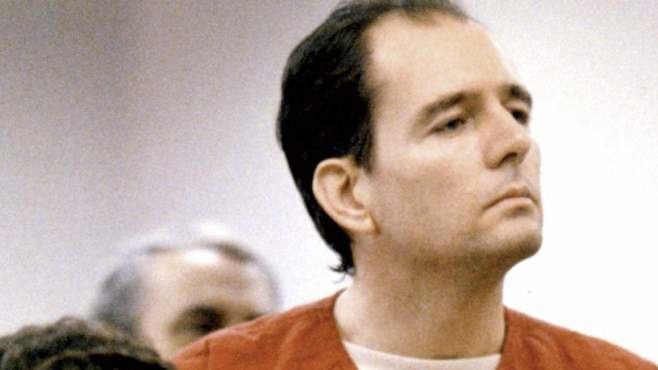
Over the course of four days in August 1990, Rolling had murdered five students in the town of Gainesville, Florida.
As he watched the broadcast on TV, Williamson glanced over and noticed that one of the windows in the room was open. This realization caused Williamson to think about how easy it would be for someone to simply open the window and slip in undetected.
Following this, Williamson drafted up an eighteen-page story about a young woman, alone in her home, being harassed on the phone by a killer before he ultimately kills her.
This little idea is what led Williamson to research the case of Danny Rolling further and eventually get to work on writing the screenplay for ‘Scream,’ with Rolling serving as the inspiration for the iconic character of Ghost Face.
Warning: The following information is graphic in content and is not intended for all readers. The information below may disturb some individuals.
It details the real-life murders of five Florida students at the hands of Danny Rolling.
Do not read any further if you do not wish to read the graphic details of his crimes.
You have been warned.
The First Two Victims
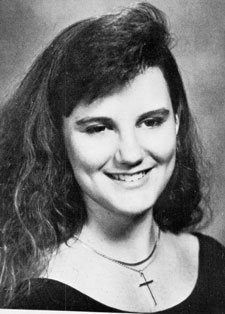

On August 24, 1990, Rolling broke into the home of University of Florida freshmen, eighteen-year-old Sonja Larson and seventeen-year-old Christina Powell.
Rolling followed the girls home from a Walmart and waited outside their apartment until about 3 AM.
He used a screwdriver he had stolen from Walmart to pry open their screen door.
Upon entering the home, he found Powell asleep on the couch. He reportedly stood over her for a brief period of time while she slept before deciding to explore the rest of the house.
He searched an upstairs bedroom where he discovered Larson asleep in her bed.
Rolling restrained Larson and taped her mouth shut to stifle her screams. He then rolled her onto her stomach and proceeded to stab her in the back multiple times. (The exact number of times is unknown.)
After killing Larson, he moved back downstairs and approached the still sleeping Powell.
Rolling taped Powell’s mouth shut and bound her wrists together behind her back. He then proceeded to cut off Powell’s clothes and sexually assault her. Rolling then turned Powell face down and stabbed her in the back five times.
The bodies of Powell and Larson were discovered the next day.
Larson’s body was found with her legs spread open and her arms above her head. Rolling had posed her in a sexually provocative position as a means of demeaning her further.
Due to the extent of the damage he inflicted on Larson, dental records had to be used to confirm her identity.
Powell was found near the front door of the apartment in the same position. He had put her there so anyone coming into the apartment would immediately see her.
Powell’s nipples had been removed and were missing from the crime scene.
When police examined the bodies, they discovered that Rollins had washed the two young girls with detergent. Rolling had also made sure to bring the soiled tape with him when he left.
His father’s years on the police force, unfortunately, taught him how to clean up a crime scene and remove all traces of evidence.
The Third Victim
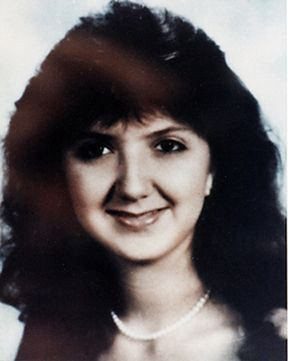
On August 25, 1990, just a day after he killed Larson and Powell, Rolling broke into the apartment of eighteen-year-old Christa Hoyt. He used the same screwdriver and a KA-BAR knife to pry open the sliding glass door.
According to Rolling, he had been able to see Hoyt from his campsite and had been watching her the day before.
When he entered the residence, he discovered that Hoyt was not home.
He waited in the apartment until Hoyt returned home at around 11 AM. After she entered, Rolling surprised her from behind by placing her in a chokehold. After Hoyt was subdued, he taped her mouth shut and bound her wrists behind her. He then forced Hoyt into the bedroom where he cut her clothes off and sexually assaulted her.
Just like with Powell, Rolling rolled Hoyt face down and stabbed her in the back, with one of his stabs rupturing her heart.
Rolling originally left the apartment but stated in his testimony that he later returned, claiming that he thought he might have left his wallet behind.
After returning, Rolling proceeded to mutilate the body of Hoyt.
Using his KA-BAR knife, Rolling cut off Hoyt’s head. He then removed her nipples before cutting both breasts off completely, and then proceeded to slice her body open from sternum to pubic bone.
After he finished mutilating Hoyt’s body, he propped her up in a seated position at the end of the bed.
He then dragged a bookshelf from another room into the bedroom and placed Hoyt’s head on one of the shelves. He positioned the bookshelf to make it appear as if the decapitated head was looking at her body.
After she failed to show up for her shift at the sheriff’s department, where she worked as a dispatcher, officers were sent to her residence to investigate.
When the sheriffs discovered the body of Hoyt, they found that her severed nipples had been placed on the bed next to the body and her breasts had been wrapped up, as if the killer planned to take them with him but chose to leave them instead.
Just like with his previous victims, Rolling washed the body clean and removed the soiled tape from the crime scene.
The fact that each victim was a petite female with shoulder-length brown hair and that all three victims had been killed in the same fashion alerted police that they had a serial killer on their hands.
Following the discovery of this third victim, the town was in a frenzy. News of the murders had attracted widespread media attention, and the media began reporting that there was a murderer on the loose in Gainesville.
Because it was at the beginning of the fall semester, a large number of students transferred to other schools, while others just withdrew from school completely.
Students that chose to remain at school started traveling and even sleeping in groups.
Campus common areas were opened up as temporary housing to allow students that lived off-campus, and were afraid to go home, a safe place to stay.
The Killer is Almost Caught
While the citizens of Gainesville were on high alert, Rolling, along with an accomplice, entered a First Union National Bank in Gainesville on August 27 and managed to make off with $7,000 in cash.
His heist would be short-lived, as police soon spotted Rolling as he entered the woods. He was pursued on foot but managed to escape. While searching the woods, police found Rolling’s campsite. Despite its close proximity to the murders, Gainesville Police believed the campsite belonged to the bank robber and seized all the evidence they found. No one thought the bank robber and college killer were one and the same. Because of this mistake, the evidence seized that day would be locked away and not looked at for another three months.

Later that same day, Rolling would go on to claim another two victims.
The Fourth and Fifth Victims
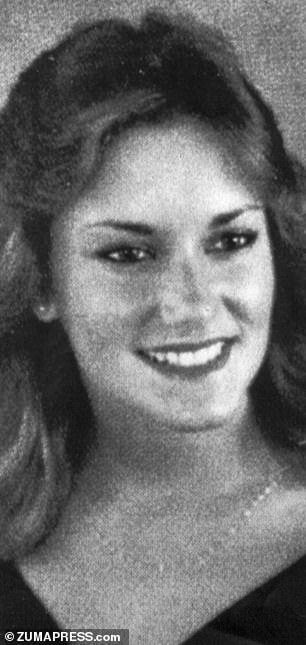

On August 27, 1990, Rolling broke into the apartment of twenty-three-year-old Tracy Paules and Manuel Taboada. He used the same screwdriver and KA-BAR knife that he had previously used to break into the homes of his other victims. (These tools are how the police were eventually able to link him to the crimes.)
Rolling searched the apartment and discovered Taboada asleep in his bedroom. Rolling, realizing that Taboada was a threat, decided he needed to dispose of him quickly. He did this by plunging his knife into the sleeping Taboada. He hit him with so much force that the knife actually went straight through his stomach and came out his back.
To Rolling’s surprise, Taboada somehow managed to wake up after the attack and fight him.
During their altercation, Rolling stabbed Taboada an additional 30 times before he managed to kill him.
Hearing the commotion, Paules walked down the hall to Taboada’s room where she ran into Rolling.
After seeing Rolling, she ran back to her room and attempted to barricade the door but, unfortunately, Rolling managed to break down the door and enter the room.
Just like his other victims, Rolling taped Paules’ mouth shut and bound her wrists. He proceeded to cut her clothes off and sexually assault her. Then, just like with his other victims, he rolled Paules face down and proceeded to stab her in the back three times.
Rolling cleaned her body and left her in a provocative position, just like his other female victims, even placing a rolled-up towel under her hips in an attempt to make it more explicit. Unlike his previous victims, Rolling would not mutilate the body of Paules.
Rolling would, however, do nothing to the body of Taboada. He left the young man in the same spot he had killed him. In a later statement, he told the courts that he only killed Taboada so that he could get to Paules.
The Hunt For the Killer
The task force assembled to catch the killer soon started to zero in on a suspect: University of Florida student Edward Humphrey.

Humphrey had a history of violent outbursts and reportedly would walk through the woods at night dressed in camo and carrying a knife. One night, the police were called to the residence of Humphrey’s grandmother after he allegedly assaulted her. Humphrey was taken into custody and the task force had their primary suspect.
What they didn’t know at the time was that the suspect they were after would enter a Winn-Dixie in Ocala, Florida just before 1 PM on September 07 and hold an employee at gunpoint. According to a witness, Rolling entered the grocery store and proclaimed, “This is a robbery. Get your money out.” After the employee handed the money to Rolling, he responded by stating, “Bless you.” Rolling fled the scene and was pursued by a police car that happened to be in the area. He was apprehended after he crashed his 1983 silver Ford Mustang and was sent to the Marion County jail in Ocala, Florida.
Thankfully, not everyone on the task force was convinced Humphrey was their man and someone decided to reach out to the violent criminal apprehension unit at the FBI to see if there were any similar cases to the ones in Gainesville.
That’s how they found out about a triple homicide that occurred on November 04, 1989 in Shreveport, Louisiana. Fifty-five-year-old William Grissom, his twenty-four-year-old daughter Julie, and his eight-year-old grandson Sean were found murdered in their home. What interested authorities was that Julie’s body had been cleaned and posed in a sexually provocative position.
Police checked warrants in Shreveport to see if any names matched with individuals currently incarcerated in the area. There was only one name that matched: Danny Rolling.
It had been three months since they had discovered the campsite, but now authorities, acting on a hunch, decided to take a closer look at what they had found. Among the evidence were a screwdriver, sports gloves, and a tape recorder with a tape inside.
When police played the tape, they heard a voice clearly identify itself as Danny Rolling. Also, on the tape they heard Rolling singing lyrics that hinted at the murders.
Despite his best-efforts, Rolling had failed to remove all of the DNA evidence from his crime scenes. With this DNA, authorities were able to create a DNA profile. They then visited Rolling in prison and managed to convince him to let them take a blood sample from him under the ruse that they didn’t believe he was a suspect and this was simply to help rule him out. The blood taken from Rolling matched the DNA found at the crime scene. The police had finally found their culprit.
Following a lengthy process, the police finally had enough evidence to bring the case to trial.
The trial officially began on February 15, 1994 and Rolling shocked the courthouse when he confessed to the murders of Sonja Larson, Christina Powell, Christa Hoyt, Tracy Paules, and Manuel Taboada. For his crimes, Rolling was sentenced to death.
It would take until October 25, 2006 before Rolling’s sentence was carried out. On October 25, Rolling would receive a lethal medical cocktail, putting an end to the Gainesville Ripper.
Real Life Translates to Film
The real-life murder spree’s biggest influence on the film would come in the opening scene of the movie, when an assailant armed with a KA-BAR knife breaks into the home of Casey Becker one evening while she is home alone, kills her, and then leaves her body hanging from a tree for her parents to discover. This is similar to how the Gainesville Ripper would pose the bodies of his victims after killing them.
The difference is, of course, that Rolling would pose his victims in sexually provocative poses as opposed to hanging them from a tree.
Later, it’s also revealed that Casey was found to have been “gutted” from her groin to her sternum. The same wound that Christa Hoyt was discovered to have sustained.
It comes as no shock that this opening scene would lift more from the murders than anything else as we know Williamson wrote this opening sequence immediately after coming across the story of Danny Rolling.
After finishing this original draft, he would put it in a drawer to begin working on the script that would eventually become ‘Teaching Mrs. Tingle,’ which would, ironically, be released years after ‘Scream.’ Some time would pass before he would pull the draft out of the drawer and finish up the script for the originally titled film, ‘Scary Movie.’
Williamson noticeably went back to the story of the ‘Gainesville Ripper.’ Just like in real life, the movie focuses on a small American town that is thrown into chaos after an unknown killer starts targeting students in the town. Just like in the movie, the town of Gainesville went on high alert, instituting curfews to try to ensure the safety of its youth.
The story became a media sensation, receiving widespread media attention similar to the barrage of news trucks that flooded the fictional town of Woodsboro.
The movie would, of course, differ from the original story when it came to the killer. Instead of attention-seeking Danny Rolling, the killer would be revealed to be Billy Loomis and Stu Macher, with Billy being motivated by revenge rather than being sexually motivated like Rolling.
Despite changing the killer to two high school friends, this 90’s horror movie, which helped rejuvenate the slasher genre, took many elements from the tragic events that occurred in Gainesville, Florida in August of 1990, once again proving that the truth is scarier than fiction.

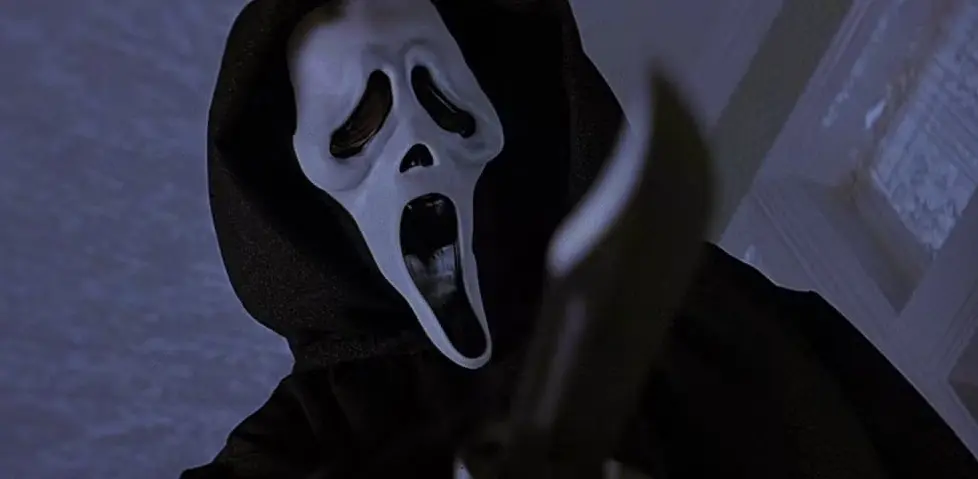
I really enjoyed reading this keep up the good work I’m looking forward to more articles that are about the story behind the movie.